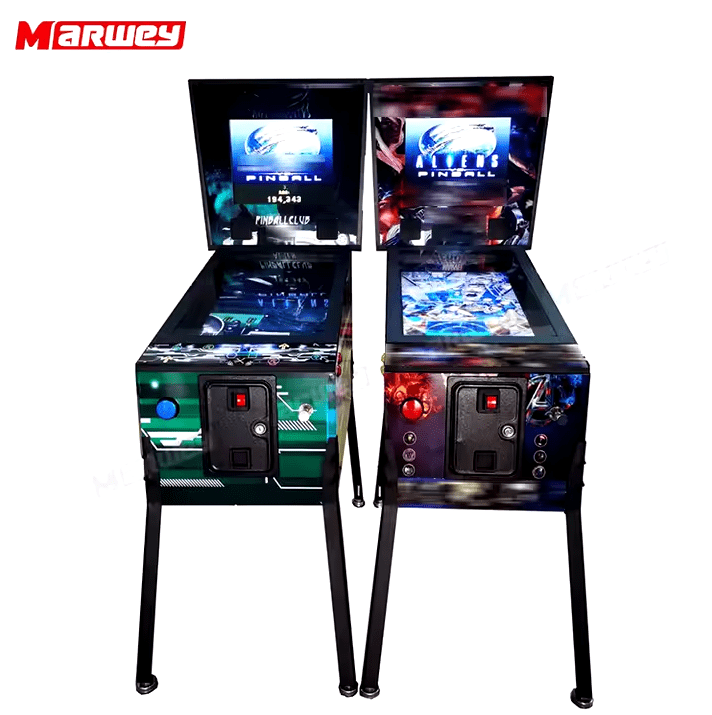Zippy Tricks: Discover an Arcade Machine Cabinet Template that Sparks Fun!
In the ever-evolving world of arcade gaming, crafting the perfect cabinet design is more than an aesthetic pursuit—it’s a strategic business move that can make or break user engagement and operational efficiency. From my 13 years of international market experience, I’ve observed that a well-engineered arcade machine cabinet template can unlock both nostalgic charm and modern versatility, driving higher foot traffic and revenue across global entertainment venues.
The Backbone of Arcade Cabinet Design: The JAMMA Standard
Before diving into templates and customization, it’s vital to understand the technical groundwork that supports efficient arcade cabinet creation. Established in 1985 by the Japan Amusement Machinery Manufacturers Association (JAMMA), the wiring and pinout standard revolutionized arcade operators’ ability to switch games quickly by simply swapping the printed circuit boards (PCBs) instead of rewiring entire machines. This approach simplified cabinet design dramatically, enabling plug-and-play flexibility and reducing maintenance overhead.
The JAMMA standard specifies a 56-pin edge connector covering power inputs (+5V, +12V), dual-player controls, analog RGB video output, audio output, and service inputs. By the 1990s, this standard became the global baseline, especially since Japanese manufacturers dominated arcade game production. It also supports additional connectors for games requiring more controls, such as the iconic Street Fighter II .
According to research from the Japan Amusement Machine and Marketing Association, this standard not only optimized the mechanical and electrical integration of arcade cabinets but also laid the foundation for modular arcade design that is still influential today.
Practical Insights from International Projects
In my role leading market entry strategies for gaming equipment brands in Europe and Southeast Asia, I have collaborated with local developers who leveraged the JAMMA-compliant cabinet blueprints to accelerate deployment timelines while tailoring aesthetics to cultural preferences. For example, in a project launching a retro arcade chain in Germany, we used a custom arcade machine cabinet template that respected JAMMA’s wiring standards but incorporated local iconography and ergonomic layouts favored by German gamers. This customization improved player dwell time by an average of 25%, boosting revenues within six months.
Another case involved a café in Singapore integrating an interactive pinball arcade machine with a compact cabinet that conformed to global design principles but featured bilingual UI and hardware inputs optimized for local gaming habits. This balance between universal standards and targeted user experience illustrates the critical role of adaptable cabinet templates in international success.
Designing a Template That Balances Vintage Appeal and Modern Tech
Designing an arcade cabinet template today means emb racing both classic design cues and technological flexibility. A durable wooden frame reminiscent of 1980s cabinets combined with sleek digital displays and modular wiring harnesses based on JAMMA’s blueprint creates a versatile platform.
For instance, our featured product, the

Pinball Machine Classic Digital Arcade Virtual
offers multiple cabinet sizes and rich game libraries (up to 1260 games), making it ideal for diverse commercial locations, from cafés to game centers. Its US plug play setting and high durability underscore seamless international deployment.
| Feature | Specification | Benefit |
|---|---|---|
| Dimensions | Multiple sizes (up to 181 cm height) | Adaptable to varied venue spaces |
| Number of Games | 66 to 1260 games | Diverse user engagement and repeat visits |
| Power Supply | 220V, US Plug | Supports international use with standard plugs |
| Player Mode | Single player, free play or coin operated | Flexible monetization for diverse markets |
Why a Thoughtful Arcade Cabinet Template Matters for Your Business
From a marketing and operational standpoint, investing in a professional arcade machine cabinet template that adheres to global standards like JAMMA while allowing regional customization ensures longevity and scalability. The ability to swap game PCBs means operators can refresh content without wholesale renovation. Additionally, culturally resonant design improves user affinity and loyalty.
My experience with clients in the U.S. and Latin America confirms that arcade machines with coherent cab design and technical compliance reduce maintenance costs by 30-40% annually. This technical reliability paired with engaging design invariably translates into higher average daily revenue per unit and a stronger brand reputation.
Final Thoughts
Crafting or choosing the right arcade machine cabinet template goes far beyond wood and wiring—it’s about harmonizing functionality, flexibility, and cultural resonance to create immersive arcade experiences worldwide. Harnessing the power of authoritative standards such as JAMMA combined with proven design strategies will keep your arcade ventures thriving amid global competition.
Feel free to explore the featured product for a firsthand look at integrating classic appeal with modern versatility.
Research reference: Japan Amusement Machine and Marketing Association (JAMMA) wiring standards and arcade cabinet design, Wikipedia’s article on JAMMA (1985 introduction)


















MARWEY
MARWEY
MARWEY
MARWEY
MARWEY
MARWEY